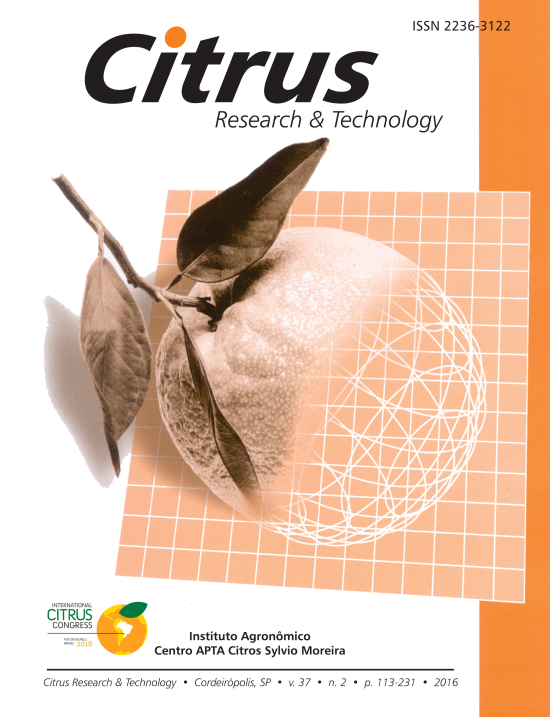Jorgino Pompeu Junior & Ary Apparecido Salibe
Jorgino Pompeu Junior & Ary Apparecido Salibe
Abstract
A study was initiated in 1965 to evaluate tree growth and fruit yield of two ‘Hamlin’ sweet orange clones (a nucellar and an old bud line carrying the exocortis viroid) on eleven sweet orange rootstocks: Caipira A, C, R and ‘DAC’, Branca, ‘Lima’, Orvalho de Mel, Santa Lucia, Florida Sweet, ´Parson Brown´, ‘Hamlin’, and ‘Rangpur´ lime.The experiment was conducted without irrigation in Cordeirópolis, State of São Paulo, Brazil. After 13 years, it was verified that the group of nucellar ‘Hamlin’ yielded more fruits than the old bud line. There was no difference on fresh fruit weight and soluble solids content between these groups, even thought average juice content was greater for the old bud line. Estimates demonstrated that the nucellar group yielded more soluble solids per tree. Among the sweet oranges, ‘Caipira DAC’ and Caipira A induced the greatest fruit yield within the nucellar group. On the other hand, the Caipira A showed the greatest fruit yield within the old bud line. The old line clones of ‘Hamlin’ sweet orange trees were smaller in size and showed greater fruit yield per volume of canopy compared to nucellar ones. Index terms: ‘Rangpur’ lime, Caipira sweet orange, exocortis dwarfing effect.

